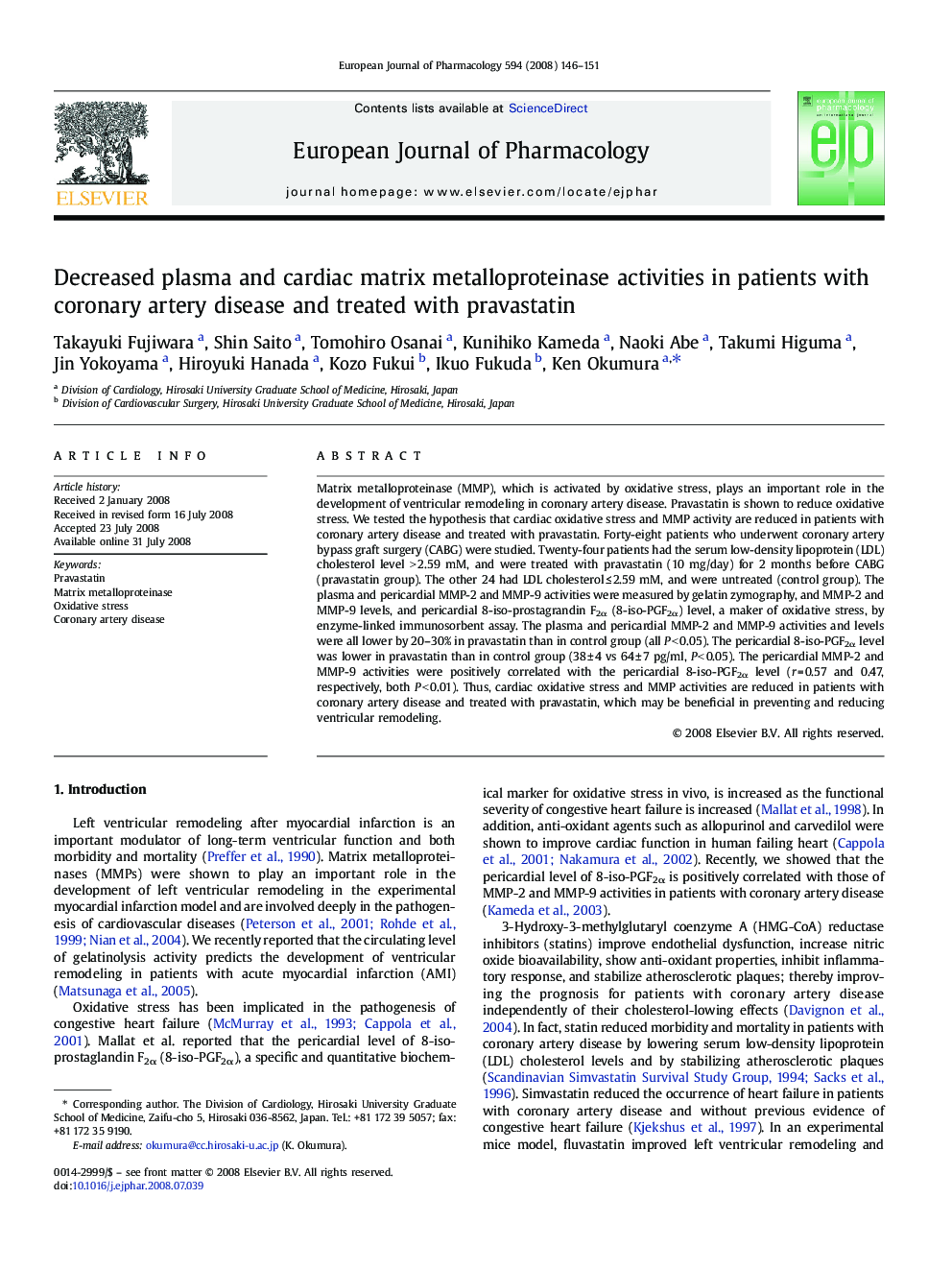| Article ID | Journal | Published Year | Pages | File Type |
|---|---|---|---|---|
| 2534910 | European Journal of Pharmacology | 2008 | 6 Pages |
Matrix metalloproteinase (MMP), which is activated by oxidative stress, plays an important role in the development of ventricular remodeling in coronary artery disease. Pravastatin is shown to reduce oxidative stress. We tested the hypothesis that cardiac oxidative stress and MMP activity are reduced in patients with coronary artery disease and treated with pravastatin. Forty-eight patients who underwent coronary artery bypass graft surgery (CABG) were studied. Twenty-four patients had the serum low-density lipoprotein (LDL) cholesterol level > 2.59 mM, and were treated with pravastatin (10 mg/day) for 2 months before CABG (pravastatin group). The other 24 had LDL cholesterol ≤ 2.59 mM, and were untreated (control group). The plasma and pericardial MMP-2 and MMP-9 activities were measured by gelatin zymography, and MMP-2 and MMP-9 levels, and pericardial 8-iso-prostagrandin F2α (8-iso-PGF2α) level, a maker of oxidative stress, by enzyme-linked immunosorbent assay. The plasma and pericardial MMP-2 and MMP-9 activities and levels were all lower by 20–30% in pravastatin than in control group (all P < 0.05). The pericardial 8-iso-PGF2α level was lower in pravastatin than in control group (38 ± 4 vs 64 ± 7 pg/ml, P < 0.05). The pericardial MMP-2 and MMP-9 activities were positively correlated with the pericardial 8-iso-PGF2α level (r = 0.57 and 0.47, respectively, both P < 0.01). Thus, cardiac oxidative stress and MMP activities are reduced in patients with coronary artery disease and treated with pravastatin, which may be beneficial in preventing and reducing ventricular remodeling.
